DeWalt DC318K Handleiding
DeWalt
Zaagmachine
DC318K
Bekijk gratis de handleiding van DeWalt DC318K (7 pagina’s), behorend tot de categorie Zaagmachine. Deze gids werd als nuttig beoordeeld door 65 mensen en kreeg gemiddeld 3.7 sterren uit 33 reviews. Heb je een vraag over DeWalt DC318K of wil je andere gebruikers van dit product iets vragen? Stel een vraag
Pagina 1/7

IF YOU HAVE ANY QUESTIONS OR COMMENTS ABOUT THIS OR ANY DEWALT TOOL,
CALL US TOLL FREE AT: 1-800-4-DEWALT (1-800-433-9258)
General Safety Rules
WARNING! Read all instructions. Failure to follow all instructions listed below may
result in electric shock, fire and/or serious injury. The term “power tool” in all of the
warnings listed below refers to your mains-operated (corded) power tool or battery-
operated (cordless) power tool.
SAVE THESE INSTRUCTIONS
1) WORK AREA SAFETY
a) Keep work area clean and well lit. Cluttered or dark areas invite accidents.
b) Do not operate power tools in explosive atmospheres, such as in the presence of
flammable liquids, gases or dust. Power tools create sparks which may ignite the dust
or fumes.
c) Keep children and bystanders away while operating a power tool. Distractions can
cause you to lose control.
2) ELECTRICAL SAFETY
a) Power tool plugs must match the outlet. Never modify the plug in any way. Do not
use any adapter plugs with earthed (grounded) power tools. Unmodified plugs and
matching outlets will reduce risk of electric shock.
b) Avoid body contact with earthed or grounded surfaces such as pipes, radiators,
ranges and refrigerators. There is an increased risk of electric shock if your body is
earthed or grounded.
c) Do not expose power tools to rain or wet conditions. Water entering a power tool will
increase the risk of electric shock.
d) Do not abuse the cord. Never use the cord for carrying, pulling or unplugging the
power tool. Keep cord away from heat, oil, sharp edges or moving parts. Damaged
or entangled cords increase the risk of electric shock. Replace or repair damaged cords.
Make sure your extension cord is in good condition. Use only 3-wire extension cords that
have 3-prong grounding-type plugs and 3-pole receptacles that accept the tool’s plug.
e) When operating a power tool outdoors, use an extension cord suitable for outdoor
use. Use of a cord suitable for outdoor use reduces the risk of electric shock. When using
an extension cord, be sure to use one heavy enough to carry the current your product will
draw. An undersized cord will cause a drop in line voltage resulting in loss of power and
overheating. The following table shows the correct size to use depending on cord length
and nameplate ampere rating. If in doubt, use the next heavier gage. The smaller the
gage number, the heavier the cord.
Recommended Minimum Wire Size for Extension Cords
Total Length of Cord
25 ft. 50 ft. 75 ft. 100 ft. 125 ft. 150 ft. 175 ft.
7.6 m 15.2 m 22.9 m 30.5 m 38.1 m 45.7 m 53.3 m
Wire Size AWG
18 18 16 16 14 14 12
3) PERSONAL SAFETY
a) Stay alert, watch what you are doing and use common sense when operating a
power tool. Do not use a power tool while you are tired or under the influence of
drugs, alcohol or medication. A moment of inattention while operating power tools may
result in serious personal injury.
b) Use safety equipment. Always wear eye protection. Safety equipment such as dust
mask, non-skid safety shoes, hard hat, or hearing protection used for appropriate condi-
tions will reduce personal injuries.
c) Avoid accidental starting. Ensure the switch is in the off-position before plugging
in. Carrying power tools with your finger on the switch or plugging in power tools that have
the switch on invites accidents.
d) Remove any adjusting key or wrench before turning the power tool on. A wrench or
a key left attached to a rotating part of the power tool may result in personal injury.
e) Do not overreach. Keep proper footing and balance at all times. This enables better
control of the power tool in unexpected situations.
f) Dress properly. Do not wear loose clothing or jewellery. Keep your hair, clothing and
gloves away from moving parts. Loose clothes, jewellery or long hair can be caught in
moving parts. Air vents often cover moving parts and should also be avoided.
g) If devices are provided for the connection of dust extraction and collection facilities,
ensure these are connected and properly used. Use of these devices can reduce dust-
related hazards.
4) POWER TOOL USE AND CARE
a) Do not force the power tool. Use the correct power tool for your application. The
correct power tool will do the job better and safer at the rate for which it was designed.
b) Do not use the power tool if the switch does not turn it on and off. Any power tool that
cannot be controlled with the switch is dangerous and must be repaired.
c) Disconnect the plug from the power source and/or the battery pack from the power
tool before making any adjustments, changing accessories, or storing power tools.
Such preventive safety measures reduce the risk of starting the power tool accidentally.
d) Store idle power tools out of the reach of children and do not allow persons
unfamiliar with the power tool or these instructions to operate the power tool. Power
tools are dangerous in the hands of untrained users.
e) Maintain power tools. Check for misalignment or binding of moving parts, breakage
of parts and any other condition that may affect the power tools operation. If dam-
aged, have the power tool repaired before use. Many accidents are caused by poorly
maintained power tools.
f) Keep cutting tools sharp and clean. Properly maintained cutting tools with sharp cutting
edges are less likely to bind and are easier to control.
g) Use the power tool, accessories and tool bits etc., in accordance with these instruc-
tions and in the manner intended for the particular type of power tool, taking into
account the working conditions and the work to be performed. Use of the power tool
for operations different from those intended could result in a hazardous situation.
5) BATTERY TOOL USE AND CARE
a) Ensure the switch is in the off position before inserting battery pack. Inserting the
battery pack into power tools that have the switch on invites accidents.
b) Recharge only with the charger specified by the manufacturer. A charger that is suit-
able for one type of battery pack may create a risk of fire when used with another battery
pack.
c) Use power tools only with specifically designated battery packs. Use of any other
battery packs may create a risk of injury and fire.
d) When battery pack is not in use, keep it away from other metal objects like paper
clips, coins, keys, nails, screws, or other small metal objects that can make a
connection from one terminal to another. Shorting the battery terminals together may
cause burns or a fire.
e) Under abusive conditions, liquid may be ejected from the battery, avoid contact. If
contact accidentally occurs, flush with water. If liquid contacts eyes, additionally
seek medical help. Liquid ejected from the battery may cause irritation or burns.
6) SERVICE
a) Have your power tool serviced by a qualified repair person using only identical
replacement parts. This will ensure that the safety of the power tool is maintained.
INSTRUCTION MANUAL
GUIDE D'UTILISATION
MANUAL DE INSTRUCCIONES
DC308 36 Volt Cordless Jig Saw
DC318 28 Volt Cordless Jig Saw
DC308 Scie sauteuse sans cordon de 36 volts
DC318 Scie sauteuse sans cordon de 28 volts
DC308 Sierra de vaivén inalámbrica de 36 voltios
DC318 Sierra de vaivén inalámbrica de 28 voltios
INSTRUCTIVO DE OPERACIÓN, CENTROS DE SERVICIO
Y PÓLIZA DE GARANTÍA. ADVERTENCIA: LÉASE ESTE
INSTRUCTIVO ANTES DE USAR EL PRODUCTO.
Additional Specific Safety Rules for Jig Saws
• Hold tool by insulated gripping surfaces when performing an operation where the cut-
ting tool may contact hidden wiring. Contact with a “live” wire will make exposed metal
parts of the tool “live” and shock the operator.
• Allow the motor to come to a complete stop before withdrawing the blade from the
kerf (the slot created by cutting). A moving blade may impact the workpiece causing a
broken blade, workpiece damage or loss of control and possible personal injury.
• Keep hands away from moving parts. Never place your hands near the cutting area.
• Keep hands away from cutting area. When sawing, never reach underneath or behind the
material being cut for any reason.
• Never hold work in your hand, lap or against parts of your body when sawing. The saw
my slip and the blade could contact the body causing injury.
• Keep handles dry, clean, free from oil and grease. This will enable better control of the
tool.
• Keep blades sharp. Dull blades may cause the saw to swerve or stall under pressure.
• Use extra caution when cutting overhead and pay particular attention to overhead
wires which may be hidden from view. Anticipate the path of falling branches and debris
ahead of time.
• Clean out your tool often, especially after heavy use. Dust and grit containing metal
particles often accumulate on interior surfaces and could create an electric shock hazard.
• Do not operate this tool for long periods of time. Vibration caused by the operating action
of this tool may cause permanent injury to fingers, hands, and arms. Use gloves to provide
extra cushion, take frequent rest periods, and limit daily time of use.
WARNING: ALWAYS use safety glasses. Everyday eyeglasses are NOT safety glasses. Also
use face or dust mask if cutting operation is dusty. ALWAYS WEAR CERTIFIED SAFETY
EQUIPMENT:
• ANSI Z87.1 eye protection (CAN/CSA Z94.3),
• ANSI S12.6 (S3.19) hearing protection,
• NIOSH/OSHA/MSHA respiratory protection.
WARNING: Some dust created by power sanding, sawing, grinding, drilling, and other
construction activities contains chemicals known to cause cancer, birth defects or other
reproductive harm. Some examples of these chemicals are:
• lead from lead-based paints,
• crystalline silica from bricks and cement and other masonry products, and
• arsenic and chromium from chemically-treated lumber (CCA).
Your risk from these exposures varies, depending on how often you do this type of work.
To reduce your exposure to these chemicals: work in a well ventilated area, and work with
approved safety equipment, such as those dust masks that are specially designed to filter out
microscopic particles.
• Avoid prolonged contact with dust from power sanding, sawing, grinding, drilling, and
other construction activities. Wear protective clothing and wash exposed areas with
soap and water. Allowing dust to get into your mouth, eyes, or lay on the skin may promote
absorption of harmful chemicals.
WARNING: Use of this tool can generate and/or disburse dust, which may cause serious and
permanent respiratory or other injury. Always use NIOSH/OSHA approved respiratory protection
appropriate for the dust exposure. Direct particles away from face and body.
WARNING: Always use eye protection. All users and bystanders must wear eye protection
that conforms to ANSI Z87.1.
WARNING: Always wear proper personal hearing protection that conforms to ANSI
S12.6 (S3.19) during use. Under some conditions and duration of use, noise from this product
may contribute to hearing loss.
• The label on your tool may include the following symbols. The symbols and their definitions
are as follows:
V ....................volts A ....................amperes
Hz ..................hertz W ...................watts
min ................minutes .................alternating current
.............direct current no ..................no load speed
..................Class I Construction ...................ear thing terminal
......................(grounded) ..................safety alert symbol
..................Class II Construction …/min ............revolutions or reciprocation
......................(double insulated)
.....................
per minute
BPM ..............beats per minute
Important Safety Instructions for Battery Chargers
SAVE THESE INSTRUCTIONS: This manual contains important safety instructions for battery
chargers.
• Before using charger, read all instructions and cautionary markings on charger, battery pack,
and product using battery pack.
WARNING: Shock hazard. Do not allow any liquid to get inside charger.
CAUTION: Burn hazard. To reduce the risk of injury, charge only DEWALT batteries. Other
types of batteries may burst causing personal injury and damage.
CAUTION: Under certain conditions, with the charger plugged in to the power supply, the
charger can be shorted by foreign material. Foreign materials of a conductive nature such as,
but not limited to, steel wool, aluminum foil, or any buildup of metallic particles should be kept
away from charger cavities. Always unplug the charger from the power supply when there is no
battery pack in the cavity. Unplug charger before attempting to clean.
• DO NOT attempt to charge the battery pack with any chargers other than the ones in
this manual. The charger and battery pack are specifically designed to work together.
• These chargers are not intended for any uses other than charging DEWALT recharge-
able batteries. Any other uses may result in risk of fire, electric shock or electrocution.
• Do not expose charger to rain or snow.
• Pull by plug rather than cord when disconnecting charger. This will reduce risk of
damage to electric plug and cord.
• Make sure that cord is located so that it will not be stepped on, tripped over, or other-
wise subjected to damage or stress.
• Do not use an extension cord unless it is absolutely necessary. Use of improper
extension cord could result in risk of fire, electric shock, or electrocution.
• An extension cord must have adequate wire size (AWG or American Wire Gauge) for
safety. The smaller the gauge number of the wire, the greater the capacity of the cable, that
is 16 gauge has more capacity than 18 gauge. When using more than one extension to make
up the total length, be sure each individual extension contains at least the minimum wire
size.
• Do not place any object on top of charger or place the charger on a soft surface
that might block the ventilation slots and result in excessive internal heat. Place the
charger in a position away from any heat source. The charger is ventilated through slots in
the top and the bottom of the housing.
• Do not mount charger on wall or permanently affix charger to any surface. The
charger is intended to use on a flat, stable surface (i.e., table top, bench top).
• Do not operate charger with damaged cord or plug — have them replaced
immediately.
• Do not operate charger if it has received a sharp blow, been dropped, or otherwise
damaged in any way. Take it to an authorized service center.
• Do not disassemble charger; take it to an authorized service center when service or
repair is required. Incorrect reassembly may result in a risk of electric shock, electrocution
or fire.
• Disconnect the charger from the outlet before attempting any cleaning. This will
reduce the risk of electric shock. Removing the battery pack will not reduce this risk.
• NEVER attempt to connect 2 chargers together.
• The charger is designed to operate on standard household electrical power
(120 Volts). Do not attempt to use it on any other voltage.
SAVE THESE INSTRUCTIONS
Introduction
The DC9000 charger is designed to charge DEWALT battery packs in approximately 1 hour. This
charger requires no adjustment and is designed to be as easy as possible to operate. Simply
place your battery pack into the receptacle of a plugged in charger and it will automatically
charge the pack.
Important Safety Instruction for Battery Packs
WARNING: For safe operation, read this manual and manuals originally supplied with tool
before using the charger.
When ordering replacement battery packs, be sure to include catalog number and voltage.
Consult the chart on the last page of this manual for compatibility of chargers and battery
packs.
The battery pack is not fully charged out of the carton. Before using the battery pack and
charger, read the safety instructions below. Then follow charging procedures outlined.
READ ALL INSTRUCTIONS
• Do not incinerate the battery pack even if it is severely damaged or is completely
worn out. The battery pack can explode in a fire. Toxic fumes and materials are created
when lithium ion battery packs are burned.
• Do not charge or use battery in explosive atmospheres, such as in the presence of flammable
liquids, gases or dust. Inserting or removing the battery from the charger may ignite the dust
or fumes.
• If battery contents come into contact with the skin, immediately wash area with mild soap
and water. If battery liquid gets into the eye, rinse water over the open eye for 15 minutes or
until irritation ceases. If medical attention is needed, the battery electrolyte is composed of a
mixture of liquid organic carbonates and lithium salts.
• Contents of opened battery cells may cause respiratory irritation. Provide fresh air. If symp-
toms persists, seek medical attention
WARNING: Burn hazard. Battery liquid may be flammable if exposed to spark or flame.
• Charge the battery packs only in DEWALT chargers.
• DO NOT splash or immerse in water or other liquids.
• Do not store or use the tool and battery pack in locations where the temperature may
reach or exceed 105°F (40˚) (such as outside sheds or metal buildings in summer).
WARNING: Never attempt to open the battery pack for any reason. If battery pack case is
cracked or damaged, do not insert into charger. Do not crush, drop or damage battery pack. Do
not use a battery pack or charger that has received a sharp blow, been dropped, run over or
damaged in any way (i.e., pierced with a nail, hit with a hammer, stepped on). Damaged
battery packs should be returned to service center for recycling.
CAUTION: When not in use, place tool on its side on a stable surface where it will not
cause a tripping or falling hazard. Some tools with large battery packs will stand upright on
the battery pack but may be easily knocked over.
WARNING: Fire hazard. Do not store or carry battery so that metal objects can contact
exposed battery terminals. For example, do not place battery in aprons, pockets, tool boxes,
product kit boxes, drawers, etc., with loose nails, screws, keys, etc. Transporting batteries can
possibly cause fires if the battery terminals inadvertently come in contact with conduc-
tive materials such as keys, coins, hand tools and the like. The US Department of
Transportation Hazardous Material Regulations (HMR) actually prohibit transporting batteries in
commerce or on airplanes (i.e., packed in suitcases and carry-on luggage) UNLESS they are
properly protected from short circuits. So when transporting individual batteries, make sure that
the battery terminals are protected and well insulated from materials that could contact them and
cause a short circuit.
DEWALT Industrial Tool Co., 701 East Joppa Road, Baltimore, MD 21286
(APR07) Form No. 586831-15 DC308, DC318 Copyright © 2006, 2007 DEWALT
The following are trademarks for one or more DEWALT power tools: the yellow and black
color scheme; the “D” shaped air intake grill; the array of pyramids on the handgrip; the kit box
configuration; and the array of lozenge-shaped humps on the surface of the tool.
If you have questions or comments, contact us.
Pour toute question ou tout commentaire, nous contacter.
Si tiene dudas o comentarios, contáctenos.
1-800-4-D WALT • www.dewalt.comE

A
B
C
D
E
F
GH
I
J
FIG. 1 FIG. 2 FIG. 3
D
FIG. 4 FIG. 6
F
FIG. 7 H
I
FIG. 8 FIG. 9
G
J
M
N
FIG. 10
G
J
FIG. 11 FIG. 12
FIG. 5
K
E
K
L
The RBRC™ Seal
The RBRC™ (Rechargeable Battery Recycling Corporation) Seal on the
lithium ion battery (or battery pack) indicates that the costs to recycle the battery
or battery pack) at the end of its useful life have already been paid by DEWALT.
RBRC™ in cooperation with DEWALT and other battery users, has established
programs in the United States to facilitate the collection of spent lithium ion batter-
ies. Help protect our environment and conserve natural resources by returning the spent lithium
ion battery to an authorized DEWALT service center or to your local retailer for recycling. You may
also contact your local recycling center for information on where to drop off the spent battery.
RBRC™ is a registered trademark of the Rechargeable Battery Recycling Corporation.
Storage Recommendations
1. The best storage place is one that is cool and dry away from direct sunlight and excess heat
or cold.
2. Long storage will not harm the battery pack or charger. Under proper conditions, they can be
stored for 5 years or more.
Charger
Your battery pack requires a 1 hour D WALT charger. Be sure to Eread all safety instructions
before using your charger. Consult the chart on the back of this manual for compatibility of
chargers and battery packs.
Charging Procedure
1. Plug the charger into an appropriate outlet before inserting the battery pack.
2. Insert the battery pack into the charger. The charger is equipped with a three-light fuel gauge
that will blink according to the state of charge of the battery pack.
3. The completion of charge is indicated by the three red lights remaining ON continuously. The
pack is fully charged and may be used at this time or left on the charger.
0% - 33% 1st light blinks
33% - 66% 1st light on, 2
nd light blinks
66% - 99% 1st, 2nd lights on, 3rd light blinks
100% 1st, 2nd, 3rd lights on
Charger Diagnostics
This charger is designed to detect certain problems that can arise with the battery packs or the
charger. Problems are indicated by the three red lights flashing together in different patterns.
PROBLEM POWERLINE
When the charger is used with some portable power sources such as generators or sources
that convert DC to AC, the charger may temporarily suspend operation. The three red lights will
flash together with two fast blinks followed by a pause. This indicates that the power souce
is out of limits.
BAD BATTERY
The charger can detect a weak or damaged battery. The three red lights will flash together with
rapid blinking. The battery will no longer charge and should be returned to a service center or
a collection site for recycling.
BAD CHARGER
The charger will detect if it is not functioning properly. The three red lights will flash together
with one fast blink followed by a long blink. The charger will no longer work and should be
returned to an authorized service center or replaced.
LEAVING THE BATTERY IN THE CHARGER
The charger and battery pack can be left connected with the red lights glowing indefinitely. The
charger will keep the battery pack fresh and fully charged. This charger features an automatic
tune-up mode which equals or balances the individual cells in the battery pack to allow it to
function at peak capacity. Battery packs should be tuned up weekly or whenever the battery no
longer delivers the same amount of work. To use the automatic tune-up mode, place the battery
pack in the charger and leave it for at least 8 hours.
Important Charging Notes
1. Longest life and best performance can be obtained if the battery pack is charged when the
air temperature is between 65°F and 75°F (18°- 24°C). DO NOT charge the battery pack in
an air temperature below +40°F (+4.5°C), or above +105°F (+40.5°C). This is important and
will prevent serious damage to the battery pack.
2. The charger and battery pack may become warm to touch while charging. This is a normal
condition, and does not indicate a problem. To facilitate the cooling of the battery pack after
use, avoid placing the charger or battery pack in a warm environment such as in a metal
shed, or an uninsulated trailer.
3. If the battery pack does not charge properly:
a. Check current at receptacle by plugging in a lamp or other appliance
b. Check to see if receptacle is connected to a light switch which turns power off when you
turn out the lights.
c. Move charger and battery pack to a location where the surrounding air temperature is
approximately 65°F - 75°F (18°- 24°C).
d. If charging problems persist, take the tool, battery pack and charger to your local
service center.
4. The battery pack should be recharged when it fails to produce sufficient power on jobs which
were easily done previously. DO NOT CONTINUE to use under these conditions. Follow the
charging procedure. You may also charge a partially used pack whenever you desire with no
adverse affect on the battery pack.
5. Foreign materials of a conductive nature such as, but not limited to, steel wool, aluminum
foil, or any buildup of metallic particles should be kept away from charger cavities. Always
unplug the charger from the power supply when there is no battery pack in the cavity. Unplug
charger before attempting to clean.
6. Do not freeze or immerse charger in water or any other liquid.
WARNING: Shock hazard. Do not allow any liquid to get inside charger.
CAUTION: Never attempt to open the battery pack for any reason. If the plastic housing of the
battery pack breaks or cracks, return to a service center for recycling.
COMPONENTS (Fig. 1, 2)
WARNING: Never modify the power tool or any part of it. Damage or personal injury could
result.
A. Battery release button F. Bevel lever
B. Battery pack G. Shoe
C. Trigger switch H. Cutting action lever
D. Lock-off button I. Dust blower control
E. Blade lever J. No-mar shoe cover
Motor
Your D WALT tool is powered by a DE EWALT-built motor.
Voltage decrease of more than 10% will cause loss of power and overheating. All DEWALT tools
are factory tested; if this tool does not operate, check your battery pack.
OPERATION
WARNING: To reduce the risk of serious personal injury, turn tool off and disconnect tool
from battery pack before making any adjustments or removing/installing attachments
or accessories.
Installing and Removing the Battery Pack (Fig. 3)
NOTE: Make sure your battery pack is fully charged.
CAUTION: Make certain the lock-off button (D) is engaged to prevent switch actuation before
removing or installing battery.
To install the battery pack into the tool handle, align the base of the tool with the rails inside
the tool’s handle and slide the battery pack firmly into the handle until you hear the lock snap
into place.
To remove the battery pack from the tool, press the battery release button (A) and firmly
pull the battery pack out of the tool handle. Insert it into the charger as described in the charger
section of this manual.
Trigger Switch (Fig. 1)
To start the jig saw, squeeze the trigger switch (C).
To slow and stop the jig saw, release the trigger switch.
VARIABLE SPEED
As the trigger switch is pressed in, the strokes-per-minute continue to increase. As the trigger is
released, the blade strokes-per-minute reduce.
The lock-off button (D) should be depressed whenever the tool is not in use to eliminate the
chance of accidental starting (Fig. 4).
Blade Installation and Removal
TO INSTALL A BLADE
NOTE: This jig saw uses only T-shank jig saw blades.
NOTE: The DW3311 flush cutting blade is for use with DEWALT DW331, DC330, DC308 and
DC318 jig saws only.
NOTE: When installing flush cutting blades (DW3311), the anti-splinter insert (N) must be
removed and the shoe must to be in the 0° positive stop position.
1. Lift the keyless blade lever (E) as shown in Figure 5.
2. Insert the T-shank blade into the clamp mechanism (K) while guiding the back of the blade
into the groove of the guide rollers (L).
3. The T-shank should be completely inside the clamp mechanism as shown in Figure 5.
4. Release the keyless blade lever.
TO REMOVE A BLADE
1. Lift the keyless blade lever (E).
2. With a slight shake the blade will drop out.
CAUTION: Do not touch used blades, they may be hot. Personal injury may result.
Beveling the Shoe (Fig. 6)
To unlock the shoe, pull the keyless bevel lever (F) to the side.
To lock the shoe, push the keyless bevel lever back under the body of the jigsaw.
TO BEVEL THE SHOE
1. Unlock the shoe.
2. Slide the shoe (G) forward to release it from the 0° positive stop position.
3. The shoe can be beveled to the left or to the right and has detents at 15°, 30° and 45°. The
shoe can be manually stopped at any degree between 0° and 45°.
4. Once the desired bevel angle is achieved, lock the shoe into place.
TO SET SHOE BACK TO 0°
1. Unlock the shoe.
2. Rotate the shoe back to 0°.
3. Slide the shoe back into the 0° positive stop position.
4. Lock the shoe.
Cutting Action – Orbital or Straight (Fig. 7)
This jig saw is equipped four cutting actions, three orbital and one straight. Orbital action has
a more aggressive blade motion and is designed for cutting in soft materials like wood or
plastic. Orbital action provides a faster cut, but with a less smooth cut across the material. In
orbital action, the blade moves forward during the cutting stroke in addition to the up and down
motion.
NOTE: Metal or hardwoods should never be cut in orbital action.
To adjust the cutting action, move the cutting action lever (H) between the four cutting positions:
0, 1, 2, and 3. Position 0 is straight cutting. Positions 1, 2, and 3 are orbital cutting. The aggres-
siveness of the cut increase as the lever is adjusted from one to three, with three being the most
aggressive cut.
Dust Blower (Fig. 8)
The dust blower helps clear the cutting area of debris created from the blade.
NOTE: When cutting metal, turn the dust blower off so cutting fluids are not blown away from
the blade.
To turn the dust blower on, slide the dust blower control (I) all the way to the top.
To turn the dust blower off, slide the dust blower control all the way to the bottom.
Removeable No-Mar Shoe Cover (Fig. 9)
The no-mar shoe cover (J) should be used when cutting surfaces that scratch easily, such as
laminate, veneer, or paint.
To attach no-mar shoe cover, place the front of the aluminum shoe (G) into the front of the
no-mar shoe cover (J) and lower the jig saw. The no-mar shoe will click securely onto the
rear of aluminum shoe.
To remove no-mar shoe cover, grasp the no-mar shoe cover from the bottom; holding onto the
two rear tabs (M) remove the no-mar shoe cover.
Anti-Splinter Insert (Fig. 10)
NOTE: Do not use the anti-splinter insert with the flush cutting blade.
The anti-splinter insert (N) should be used when trying to minimize tear-out, especially when
cutting veneer, laminate, or finished surfaces, such as paint. The anti-splinter insert should be
installed into the no-mar shoe cover (J). If the no-mar cover is not used, install anti-splinter insert
into shoe (G).
Cutting
WARNING: The jig saw should not be operated with the shoe removed or serious personal
injury may result.
POCKET CUTTING (FIG. 11)
A pocket cut is an easy method of making an inside cut. The saw can be inserted directly into a
panel or board without first drilling a lead or pilot hole. In pocket cutting, measure the surface to
be cut and mark clearly with a pencil. Next tip the saw forward until the front end of the shoe sits
firmly on the work surface and the blade clears the work through its full stroke. Switch the tool on
and allow it to attain maximum speed. Grip the saw firmly and lower the back edge of tool slowly
until the blade reaches its complete depth. Hold the shoe flat against the wood and begin cutting.
Do not remove blade from cut while it is still moving. Blade must come to a complete stop.
FLUSH CUTTING (FIG. 12)
A flush cut is necessary when finishing off cuts up to a wall or an obstacle, such as back-splash.
One of the easiest ways to accomplish the flush cut is to use a flush cutting blade (DW3311). The
flush cutting blade provides the reach necessary to cut right up to the front edge of the jig saw
shoe. Remove the anti-splinter insert and return the shoe to the 0° positive stop position before
installing and using the flush cutting blade. For the best cut quality the flush cutting blade should
be used in the 0 or 1 orbital position. The flush cutting blade should not be used to start the cut
because the flush cutting blade prevents the shoe from being supported by the work surface.
Use wood cutting practices explained below.
WOOD CUTTING
Support the workpiece adequately at all times. Use the higher speed setting for cutting wood.
Do not attempt to turn the tool on when blade is against material to be cut. This could stall the
motor. Place the front of shoe on the material to be cut and hold the jig saw shoe firmly against
the wood while cutting. Don’t force the tool; let the blade cut at its own speed. When the cut is
complete, turn the jig saw off. Let blade come to a complete stop and then lay the saw aside
before loosening the work.
A

METAL CUTTING
In cutting thin gauge sheet metals, it is best to clamp wood to the bottom of sheet metal; this will
insure a clean cut without the risk of vibration or tearing of metal. Always remember to use a finer
blade for ferrous metals (for those that have a high iron content); and use a coarser blade for
non-ferrous metals (those that do not have an iron content). Use a high speed setting for cutting
soft metals (aluminum, copper, brass, mild steel, galvanized. pipe, conduit sheet metal, etc.). Use
lower speed to cut plastics, tile, laminate, hard metals, and cast iron.
MAINTENANCE
WARNING: To reduce the risk of serious personal injury, turn tool off and disconnect
tool from battery pack before making any adjustments or removing/installing attachments
or accessories.
Cleaning
WARNING: Never use solvents or other harsh chemicals for cleaning the non-metallic parts
of the tool. These chemicals may weaken the plastic materials used in these parts. Use a cloth
dampened only with water and mild soap. Never let any liquid get inside the tool; never immerse
any part of the tool into a liquid.
Do not use gasoline, turpentine, lacquer or paint thinner, dry cleaning fluids or similar products.
Never let any liquid get inside the tool; never immerse any part of the tool into a liquid.
CHARGER CLEANING INSTRUCTIONS
WARNING: Shock hazard. Disconnect the charger from the AC outlet before cleaning. Dirt
and grease may be removed from the exterior of the charger using a cloth or soft non-metallic
brush. Do not use water or any cleaning solutions.
Lubrication
NOTE: NEVER spray or in any other way apply lubricants or cleaning solvents inside the tool.
This can seriously affect the life and performance of the tool.
DEWALT tools are properly lubricated at the factory and are ready for use. However, it is recom-
mended that, once a year, you take or send the tool to a certified service center for a thorough
cleaning and inspection.
Repairs
The charger is not user serviceable. There are no user serviceable parts inside the charger.
Servicing at an authorized service center is required to avoid damage to static sensitive internal
components.
To assure product SAFETY and RELIABILITY, repairs, maintenance and adjustments (including
brush inspection and replacement) should be performed by a D EWALT factory service center,
a DEWALT authorized service center or other qualified service personnel. Always use identical
replacement parts.
ACCESSORIES
WARNING: Since accessories, other than those offered by D WALT, have not been tested E
with this product, use of such accessories with this tool could be hazardous. To reduce the risk
of injury, only DEWALT, recommended accessories should be used with this product.
Recommended accessories for use with your tool are available at extra cost from your local
dealer or authorized service center. If you need assistance in locating any accessory for your
tool, please contact DEWALT Industrial Tool Co., 701 East Joppa Road, Baltimore, MD 21286,
call 1-800-4-DEWALT (1-800-433-9258) or visit our website www.dewalt.com.
NOTE: The DW3311 flush cutting blade is for use with DEWALT DW331, DC330, DC308 and
DC318 jig saws only.
Three Year Limited Warranty
DEWALT will repair, without charge, any defects due to faulty materials or workmanship for three
years from the date of purchase. This warranty does not cover part failure due to normal wear
or tool abuse. For further detail of warranty coverage and warranty repair information, visit www.
dewalt.com or call 1-800-4-DEWALT (1-800-433-9258). This warranty does not apply to acces-
sories or damage caused where repairs have been made or attempted by others. This warranty
gives you specific legal rights and you may have other rights which vary in certain states or
provinces.
In addition to the warranty, DEWALT tools are covered by our:
1 YEAR FREE SERVICE
DEWALT will maintain the tool and replace worn parts caused by normal use, for free, any time
during the first year after purchase.
2 YEARS FREE SERVICE ON DEWALT BATTERY PACKS
DC9096, DC9091, DC9071, DC9360 and DC9280
90 DAY MONEY BACK GUARANTEE
If you are not completely satisfied with the performance of your DEWALT Power Tool, Laser, or
Nailer for any reason, you can return it within 90 days from the date of purchase with a receipt
for a full refund – no questions asked.
LATIN AMERICA: This warranty does not apply to products sold in Latin America. For products
sold in Latin America, see country specific warranty information contained either in the packag-
ing, call the local company or see website for warranty information.
FREE WARNING LABEL REPLACEMENT: If your warning labels become illegible or are miss-
ing, call 1-800-4-DEWALT for a free replacement.
Patent Notification
Manufactured under one or more of
the following U.S. patents:
6859013
6329788
6175211
6133713
6057608
6653815
Other patents pending.
SI VOUS AVEZ DES QUESTIONS OU VOULEZ NOUS FAIRE PART DE VOS COMMENTAIRES
CONCERNANT CET OUTIL OU TOUT AUTRE OUTIL DEWALT, COMPOSEZ SANS FRAIS
LE : 1 800 433-9258.
Règles de sécurité – Généralités
AVERTISSEMENT : Lire toutes ces directives. Tout manquement aux directives
suivantes pose des risques de choc électrique, d’incendie et/ou de blessure grave.
Le terme « outil électrique » dans tous les avertissements ci-après se rapporte à votre
outil électrique à alimentation sur secteur (avec fil) ou par piles (sans fil).
CONSERVER CES DIRECTIVES
1) SÉCURITÉ - AIRE DE TRAVAIL
a) Maintenir l’aire de travail propre et bien éclairée. Les lieux encombrés ou sombres sont
propices aux accidents.
b) Ne pas faire fonctionner un outil électrique dans une atmosphère explosive, en
présence par exemple de poussières, gaz ou liquides inflammables. Les outils élec-
triques peuvent engendrer des étincelles qui pourraient enflammer toute émanation ou
poussière ambiante.
c) Tenir les enfants, ou toute autre personne, éloignés pendant l’utilisation d’un outil
électrique. Toute distraction pourrait vous faire perdre la maîtrise de ce dernier.
2) SÉCURITÉ – ÉLECTRICITÉ
a) La fiche électrique de l’outil doit correspondre à la prise murale. Ne jamais modi-
fier la fiche en aucune façon. Ne jamais utiliser de fiche d’adaptation avec un outil
électrique mis à la terre. L’utilisation de fiches d’origine et de prises appropriées réduira
les risques de choc électrique.
b) Éviter tout contact corporel avec des éléments mis à la terre comme tuyaux, radia-
teurs, cuisinières ou réfrigérateurs. Les risques de choc électrique augmentent lorsque
le corps est mis à la terre.
c) Ne pas exposer les outils électriques à la pluie ou à l’humidité. Toute pénétration d’un
outil électrique par un liquide augmente les risques de choc électrique.
d) Ne pas utiliser le cordon de façon abusive. Ne jamais utiliser le cordon pour trans-
porter, tirer ou débrancher un outil électrique. Protéger le cordon de la chaleur,
de l’huile et de tout bord tranchant ou pièce mobile. Les cordons endommagés ou
emmêlés augmentent les risques de choc électrique.
e) Lors de l’utilisation d’un outil électrique à l’extérieur, n’utiliser que des rallonges
conçues pour l’extérieur. L’utilisation d’une rallonge conçue pour l’extérieur réduit les
risques de choc électrique. En cas d’utilisation d’une rallonge, s’assurer que les valeurs
nominales de la rallonge utilisée correspondent bien à celles de l’outil alimenté. L’usage
d’une rallonge de calibre insuffisant causera une chute de tension entraînant perte de puis-
sance et surchauffe. Le tableau ci-dessous illustre les calibres à utiliser selon la longueur
de rallonge et l’intensité nominale indiquée sur la plaque signalétique. En cas de doutes,
utiliser le calibre suivant. Plus le calibre est petit, plus la rallonge peut supporter de cou-
rant.
Calibre de fil minimum recommandé pour les rallonges
Longueur totale de la rallonge
25 pi 50 pi 75 pi 100 pi 125 pi 150 pi 175 pi
7,6 m 15,2 m 22,9 m 30,5 m 38,1 m 45,7 m 53,3 m
Calibre AWG
18 18 16 16 14 14 12
3) SÉCURITÉ PERSONNELLE
a) Rester vigilant en tout temps et faire preuve de jugement pendant l’utilisation
d’un outil électrique. Ne pas utiliser d’outil électrique en cas de fatigue ou sous
l’influence de drogues, d’alcool ou de médicaments. Tout moment d’inattention pendant
l’utilisation d’un outil électrique pose des risques de blessure grave.
b) Utiliser le matériel de sécurité approprié. Toujours porter des lunettes de protection.
Le fait de porter un masque anti-poussières, des chaussures antidérapantes, un casque
de sécurité ou des protecteurs auditifs lorsque la situation le requiert réduira les risques
de blessure.
c) Éviter tout démarrage accidentel. S’assurer que l’interrupteur est en position
d’arrêt avant tout branchement. Transporter un outil le doigt sur l’interrupteur ou brancher
un outil électrique alors que l’interrupteur est en position de marche invite les accidents.
d) Retirer toute clé de réglage avant de démarrer l’outil. Une clé laissée sur une pièce
rotative d’un outil électrique pose des risques de blessure.
e) Ne pas effectuer de travaux hors de portée. Les pieds doivent rester bien ancrés au
sol afin de maintenir son équilibre en tout temps. Cela permet de mieux maîtriser l’outil
électrique dans les situations imprévues.
f) Porter des vêtements appropriés. Ne pas porter de vêtements amples ni de bijoux.
Maintenir cheveux, vêtements et gants éloignés des pièces mobiles. Vêtements
amples, bijoux ou cheveux longs risquent de rester coincés dans ces pièces mobiles.
Prendre des précautions autour des évents car ils recouvrent des pièces mobiles.
g) Lorsque un dispositif de connexion à un système de dépoussiérage ou d’élimination
est fourni, s’assurer qu’il est connecté et utilisé correctement. L’utilisation de ces dis-
positifs peut réduire les risques engendrés par les poussières.
4) UTILISATION ET ENTRETIEN DES OUTILS ÉLECTRIQUES
a) Ne pas forcer un outil électrique. Utiliser l’outil approprié au travail en cours. L’outil
approprié effectuera un meilleur travail, de façon plus sûre et à la vitesse pour laquelle il a
été conçu.
b) Ne pas utiliser un outil électrique dont l’interrupteur est défectueux. Tout appareil
dont l’interrupteur est défectueux est dangereux et doit être réparé.
c) Débrancher la fiche du secteur et/ou le bloc-piles de l’outil électrique avant de
faire tout réglage ou changement d’accessoire, ou avant de ranger ce dernier. Ces
mesures préventives réduisent les risques de démarrage accidentel de l’appareil.
d) Après usage, ranger les outils électriques hors de la portée des enfants, et ne
permettre à aucune personne n’étant pas familière avec un outil électrique (ou son
manuel d’instruction) d’utiliser ce dernier. Les outils peuvent être dangereux entre les
mains des novices.
e) Entretenir les outils électriques. Vérifier les pièces mobiles pour s’assurer qu’elles
sont bien alignées et tournent librement, qu’elles sont en bon état et ne sont affec-
tées d’aucune condition susceptible de nuire au bon fonctionnement de l’outil. En
cas de dommage, faire réparer l’outil électrique avant toute nouvelle utilisation. Bien
des accidents sont causés par des outils mal entretenus.
f) Maintenir tout outil de coupe bien aiguisé et propre. Les outils de coupe bien entrete-
nus et affûtés sont moins susceptibles de se coincer et sont plus faciles à contrôler.
g) Utiliser un outil électrique, ses accessoires, mèches, etc., conformément aux
présentes directives et suivant la manière prévue pour ce type particulier d’outil
électrique, en tenant compte des conditions de travail et du travail à effectuer.
L’utilisation d’un outil électrique pour toute opération autre que celle pour laquelle il a été
conçu est dangereuse.
5) UTILISATION ET ENTRETIEN DE L'OUTIL ALIMENTÉ PAR PILE
a) S’assurer que l’interrupteur se trouve à la position d'arrêt avant d’insérer le bloc-
piles. Insérer un bloc-piles dans un outil électrique dont l’interrupteur est à la position de
marche risque de provoquer un accident.
b) Ne recharger l'outil qu'au moyen du chargeur précisé par le fabricant. L’utilisation
d’un chargeur qui convient à un type de bloc-piles risque de provoquer un incendie s’il est
utilisé avec un autre type de bloc-piles.
c) Utiliser les outils électriques uniquement avec les blocs-piles conçus à cet effet.
L’utilisation de tout autre bloc-piles risque de causer des blessures ou un incendie.
d) Lorsque le bloc-piles n’est pas utilisé, le tenir éloigné des objets métalliques, notam-
ment des trombones, de la monnaie, des clés, des clous, des vis, etc., qui peuvent
établir une connexion entre les deux bornes. Mettre en court-circuit les bornes du bloc-
piles peut provoquer des brûlures ou un incendie.
e) En cas d’utilisation abusive, un liquide peut gicler hors du bloc-piles, éviter tout
contact. Si un contact accidentel se produit, laver à grande eau. Si le liquide entre
en contact avec les yeux, obtenir des soins médicaux. Le liquide qui gicle hors du bloc-
piles peut provoquer des irritations ou des brûlures.
6) SERVICE
a) Faire entretenir les outils électriques par un réparateur qualifié en n’utilisant que
des pièces de rechange identiques. Cela permettra d’assurer l’intégrité de l’outil élec-
trique et la sécurité de l’utilisateur.
Régles de sécurité additionnelles particuliéres
concernant les scies sauteuses
• Tenir l’outil par les surfaces isolées prévues à cette fin lorsqu’il risque d’entrer en
contact avec des fils cachés, car de tels contacts peuvent mettre les pièces métalliques de
l’outil sous tension, engendrant des risques de choc électrique.
• Attendre que le moteur s’arrête complètement avant de retirer la lame de l’entaille (la
fente créée par la coupe). Une lame qui bouge peut rebondir contre la pièce et se briser ou
endommager la pièce ou encore, faire perdre la maîtrise de l’outil et causer des risques de
blessure.
• Garder des mains loin des parties en mouvement. Ne jamais placer vos mains près du
secteur de coupe.
• Garder des mains loin de secteur de découpage. En sciant, jamais la portée au-dessous
de ou derrière le matériel étant coupé pour n'importe quelle raison.
• Ne tenez jamais le travail dans votre main, recouvrement ou contre des parties de
votre corps en sciant. La scie ma glissade et la lame a pu entrer en contact avec le corps
causant des dommages.
• Garder les poignées propres, sèches et exemptes de toute trace d’huile et de graisse
afin d’éviter de perdre la maîtrise de l’outil.
• Maintenir les lames bien aiguisées, car les lames usées peuvent faire dévier la scie ou
faire caler le moteur lorsqu’on exerce trop de pression sur l’outil.
• Utiliser la prudence supplémentaire en coupant des fraiss généraux et paie l'attention
particulière à au-dessus les fils qui peuvent être cachés de la vue. Prévoir le chemin de
branches et le débris en baisse en avance.
• Bien nettoyer l’outil périodiquement, surtout après l’avoir utilisé longuement, car la
poussière et les particules métalliques tendent à s’accumuler sur les surfaces internes et
peuvent entraîner des risques de choc électrique.
• Ne pas utiliser cet outil pendant des périodes prolongées. Les vibrations causées par
l’action de fonctionnement de l’outil peuvent blesser en permanence les doigts, les mains et
les bras. Porter des gants pour amortir les vibrations, faire des pauses fréquentes et limiter
le temps d’utilisation quotidien de l’outil.
AVERTISSEMENT: TOUJOURS PORTER DES LUNETTES DE SÉCURITÉ. Les lunettes de
vue ne constituent PAS des lunettes de sécurité. Utiliser également un masque facial ou
anti-poussière si l'opération de découpe génère de la poussière. TOUJOURS PORTER UN
ÉQUIPEMENT DE PROTECTION HOMOLOGUÉ :
• protection oculaire ANSI Z87.1 (CAN/CSA Z94.3),
• protection auditive ANSI S12.6 (S3.19) et
• protection des voies respiratoires NIOSH/OSHA.
AVERTISSEMENT : Certains outils électriques, tels que les sableuses, les scies, les
meules, les perceuses ou certains autres outils de construction, peuvent produire de la pous-
sière contenant des produits chimiques susceptibles d’entraîner le cancer, des malformations
congénitales ou pouvant être nocifs pour le système reproductif. Parmi ces produits chi-
miques, on retrouve :
• le plomb dans les peintures à base de plomb,
• la silice cristalline dans les briques et le ciment et autres produits de maçonnerie,
• l’arsenic et le chrome dans le bois de sciage ayant subi un traitement chimique (comme
l’arséniate de cuivre et de chrome).
Le risque associé à de telles expositions varie selon la fréquence avec laquelle on effectue ces
travaux. Pour réduire l’exposition à de tels produits, il faut travailler dans un endroit bien aéré et
utiliser le matériel de sécurité approprié, tel un masque anti-poussières spécialement conçu pour
filtrer les particules microscopiques.
• Éviter tout contact prolongé avec la poussière soulevée par cet outil ou autres outils
électriques. Porter des vêtements de protection et nettoyer les parties exposées du
corps à l’eau savonneuse. S’assurer de bien se protéger afin d’éviter d’absorber par la
bouche, les yeux ou la peau des produits chimiques nocifs.
AVERTISSEMENT : Cet outil peut produire et répandre de la poussière susceptible de
causer des dommages sérieux et permanents au système respiratoire. Toujours utiliser un appa-
reil respiratoire anti-poussières approprié approuvé par le NIOSH ou l’OSHA. Diriger les parti-
cules dans le sens opposé du visage et du corps.
AVERTISSEMENT : toujours utiliser une protection oculaire. Tous les utilisateurs et per-
sonnes à proximité doivent porter une protection oculaire conforme à la norme ANSI Z87.1.
AVERTISSEMENT : TOUJOURS porter une protection auditive appropriée conformé-
ment à la norme ANSI S12.6 (S3.19) lors de l’utilisation du produit. Dans certaines condi-
tions et selon la durée d’utilisation, le bruit émis par ce produit peut contribuer à une perte
auditive.
• L'étiquette apposée sur votre outil peut comprendre les symboles suivants. Les symboles et
leurs définitions sont indiqués ci-après :
V .....................volts A ....................ampères
Hz ...................hertz W ...................watts
min .................minutes .................courant alternatif
..............courant continu n o ..................vitesse à vide
...................Construction de classe I ...................borne de terre
.......................(mis à la terre) ..................symbole d'alerte à la sécurité
...................Construction de classe II …/min ............rotations ou alternance
.......................(à double isolation) ......................
par minute
BPM ...............coups par minute
Directives de sécurité importantes pour les chargeurs
de piles
CONSERVER CES DIRECTIVES : Ce manuel contient des directives de sécurité importantes
sur les chargeurs de piles.
• Avant d’utiliser le chargeur, lire toutes les directives et les indications d'avertissement figurant
sur le chargeur, le bloc-piles et le produit utilisé avec le bloc-piles.
AVERTISSEMENT : Risque de choc. Éviter la pénétration de tout liquide dans le chargeur.
MISE EN GARDE : Risque de brûlure. Pour réduire le risque de blessures, charger seulement
les piles DEWALT. D’autres types de piles peuvent exploser et causer des blessures corporelles
et des dommages.
MISE EN GARDE : Sous certaines conditions, lorsque le chargeur est branché au bloc
d’alimentation, le chargeur peut être court-circuité par des corps étrangers. Tout corps étranger
conducteur, tel que, mais sans s'y limiter, la laine d'acier, le papier d'aluminium, ou toute
accumulation de particules métalliques, doit être maintenu à distance des ouvertures du
chargeur. Débrancher systématiquement le chargeur si aucun bloc-piles n’y est inséré.
Débrancher le chargeur avant tout nettoyage.
• NE PAS charger le bloc-piles au moyen de tout autre chargeur que ceux mentionnés
dans le présent manuel. Le chargeur et le bloc-piles sont spécialement conçus pour être
utilisés ensemble.
• Ces chargeurs ne sont pas prévus pour être utilisés à d’autres fins que celles de
charger les piles rechargeables D EWALT. Toute autre utilisation risque de provoquer un
incendie, un choc électrique ou une électrocution.
• Ne pas exposer le chargeur à la pluie ou à la neige.
• Tirer sur la fiche plutôt que sur le cordon pour débrancher le chargeur. Cela permet
de réduire le risque d’endommager la fiche ou le cordon d’alimentation.
• S’assurer que le cordon est situé en lieu sûr de manière à ce que personne ne marche
ni ne trébuche dessus ou à ce qu’il ne soit pas endommagé ni soumis à une tension.
• Ne pas utiliser de rallonge à moins que cela ne soit absolument nécessaire.
L’utilisation d’une rallonge inadéquate risque d’entraîner un incendie, un choc électrique ou
une électrocution.
• La rallonge utilisée doit présenter un calibre adéquat (AWG ou calibrage américain
normalisé des fils) pour assurer la sécurité. Plus le numéro de calibre de fil est petit et
plus sa capacité est grande, par exemple un calibre 16 a plus de capacité qu’un calibre 18. Si
plus d’une rallonge est utilisée pour obtenir la longueur totale, s’assurer que chaque rallonge
présente au moins le calibre de fil minimum.
• Ne pas mettre d’objet sur le chargeur ni mettre ce dernier sur une surface molle
pouvant obstruer les fentes de ventilation et ainsi provoquer une chaleur interne
excessive. Mettre le chargeur à un endroit éloigné de toute source de chaleur. La ventilation
du chargeur se fait par les fentes pratiquées dans les parties supérieures et inférieures du
boîtier.
Product specificaties
| Merk: | DeWalt |
| Categorie: | Zaagmachine |
| Model: | DC318K |
Heb je hulp nodig?
Als je hulp nodig hebt met DeWalt DC318K stel dan hieronder een vraag en andere gebruikers zullen je antwoorden
Handleiding Zaagmachine DeWalt
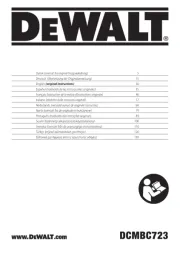
4 Juli 2025

11 Februari 2025

2 Januari 2025

2 Januari 2025

2 Januari 2025

22 November 2024

11 September 2024

15 Juli 2024

15 Juli 2024

15 Juli 2024
Handleiding Zaagmachine
- Ferm
- Toledo
- Maruyama
- Rona
- Bavaria By Einhell
- Stiga
- FIXIT
- Makita
- Powerblade
- Stalco
- MSW
- Husqvarna
- Toolson
- Bort
- Gude
Nieuwste handleidingen voor Zaagmachine
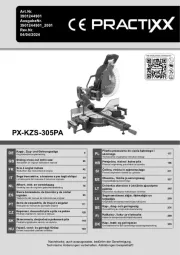
30 Juli 2025
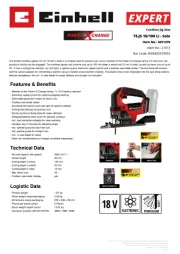
29 Juli 2025
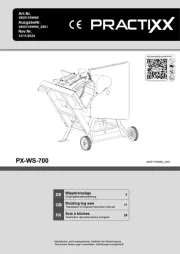
29 Juli 2025
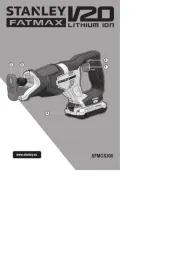
29 Juli 2025
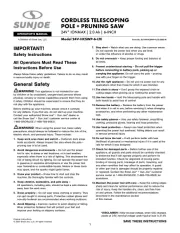
29 Juli 2025
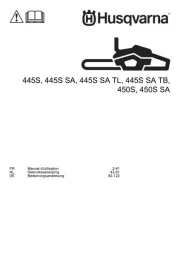
28 Juli 2025
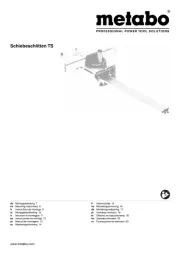
23 Juli 2025
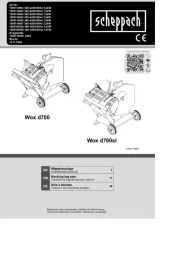
21 Juli 2025
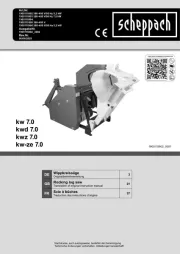
21 Juli 2025
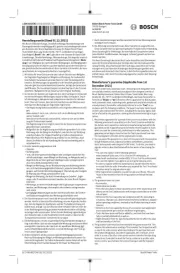
20 Juli 2025